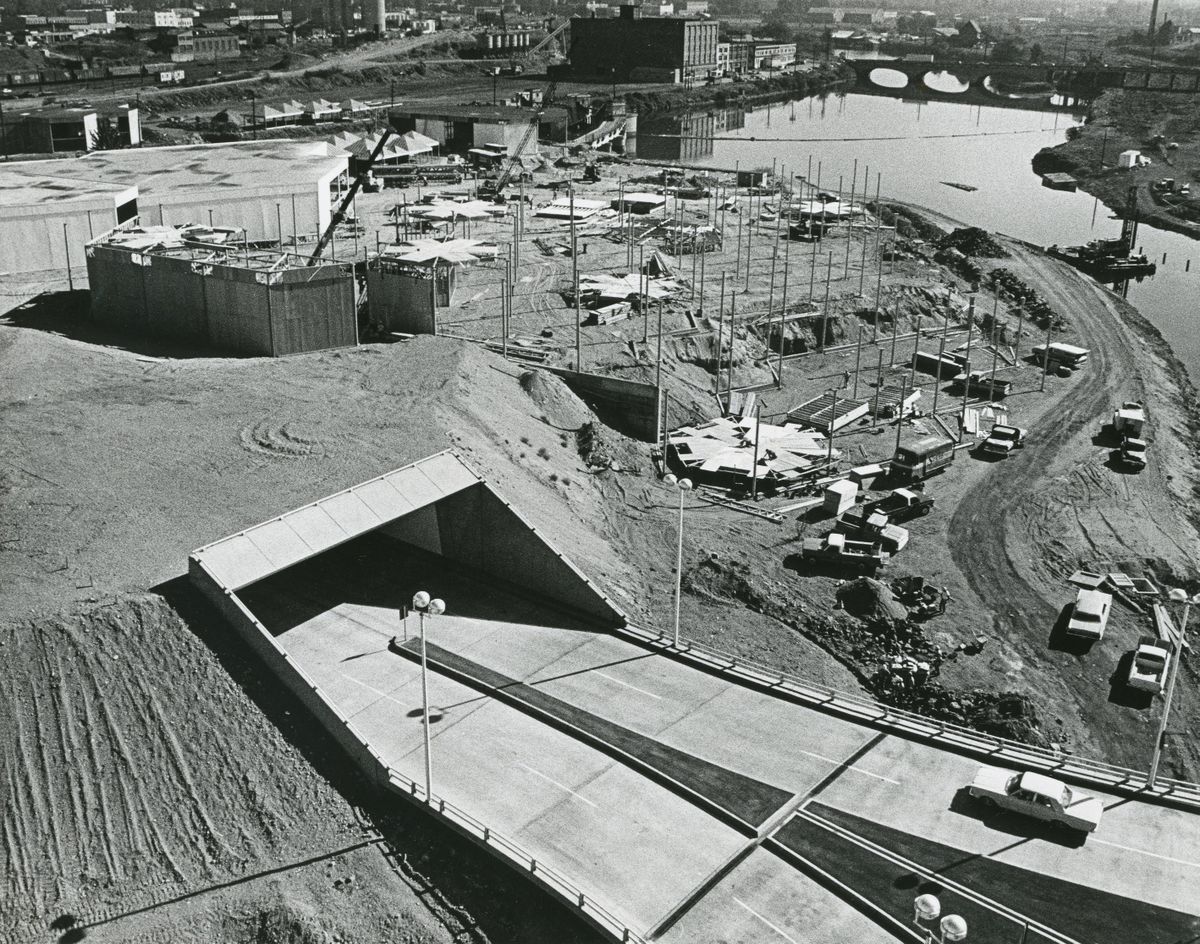Then and Now: Washington-Stevens Bridge

Several bridges over the Spokane River for horse and auto traffic were once aligned with Washington Street stretching across the north and south river channels.
A few were wood or steel and eventually concrete. When the Great Northern Railroad depot opened on Havermale Island in 1902, with its iconic clock tower, the only auto access across Havermale was via the Howard Street bridge. On the north channel, a wooden, then steel, bridge provided crossings between 1891 until a concrete bridge was built in 1908.
Also around 1908, a steel girder bridge, with timber flooring, was built over the river’s south channel, carrying north-south traffic that passed under the Union Depot’s elevated tracks up and over the Great Northern train tracks on Havermale Island. A second low bridge from the south shore deadended at the depot.
Fast-forward to the 1960s, and the steel beams under south channel bridges were decayed by rust, and a 12,000-pound weight limit was posted in 1971 for safety.
Traffic planners designed a new Y-shaped bridge coming out of a manmade tunnel on Havermale Island and connecting with Stevens and Washington streets. Expo ’74 was just around the corner, and the elegant bridge was also seen as a way to beautify the riverfront.
Glen Yake, then-assistant city manager for engineering, said the bridge design would separate arterial traffic from pedestrian traffic and “give pedestrians a new and most pleasant experience in a park-like setting as opposed to a walkway adjoining the traffic way.” The state Urban Arterial Board would pay for most of it, and the new tunnel on the island would keep cars and trucks moving while parkgoers strolled unimpeded.
The north channel bridge was replaced in 1985 by Lydig Construction.
The 1973 south channel bridge didn’t have sidewalks, Yake explained at the time because of the world’s fair. It was for the controlled entry to Expo.
“Understandably during Expo, no pedestrians will be allowed to walk into the exposition site without going through a turnstile.”
“But this will be only for a six -month period,” while the fair is open, he added.
When the first drawings of the bridge were released in 1972, city manager Sylvan Fullwiler called the bridge a “magnificent contribution to beautification of the entire downtown district.” Fullwiler said the bridge “will have a significant impact on the traffic flow through the central business district.” The couplet bridge opened in July 1973.